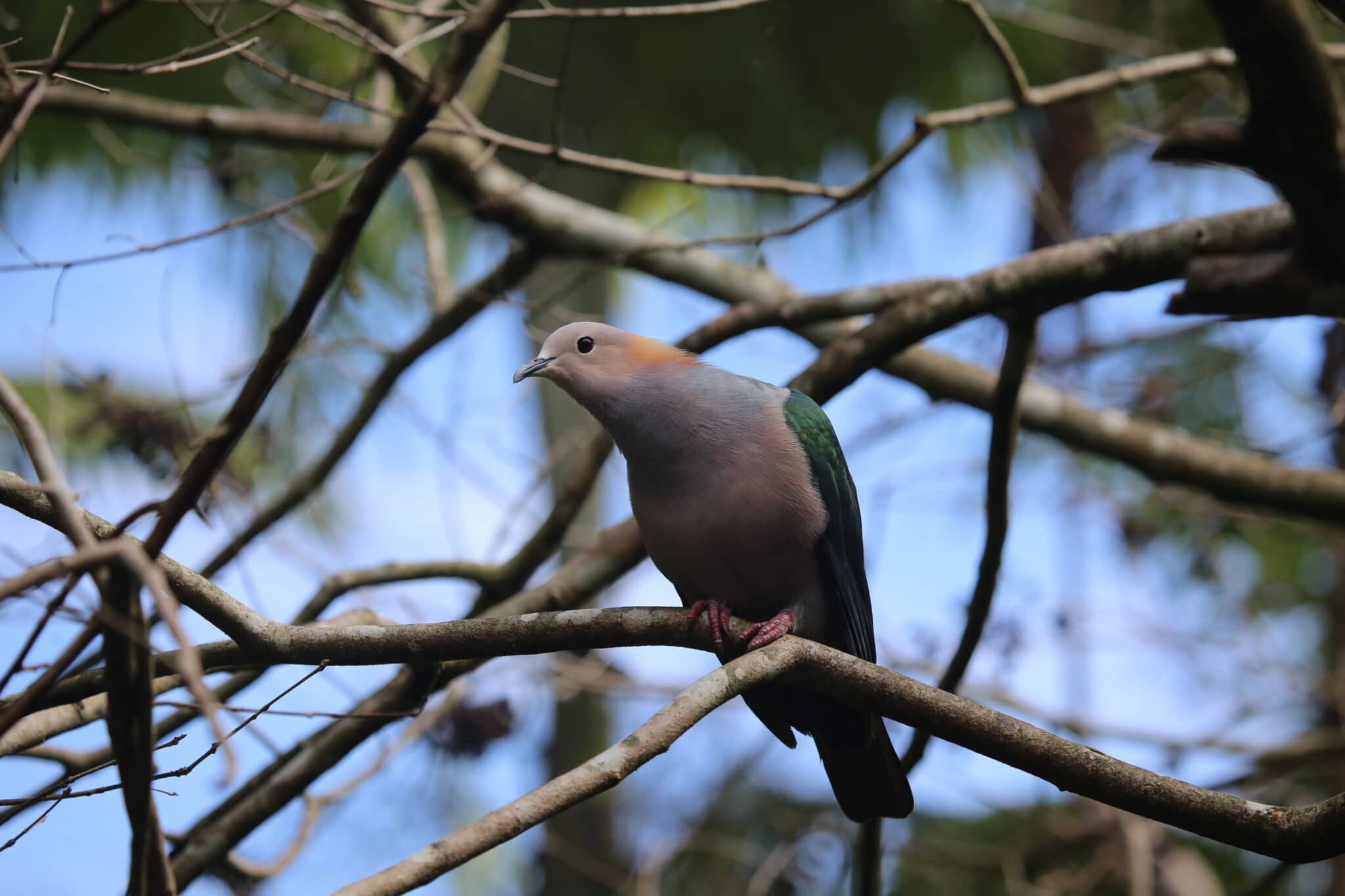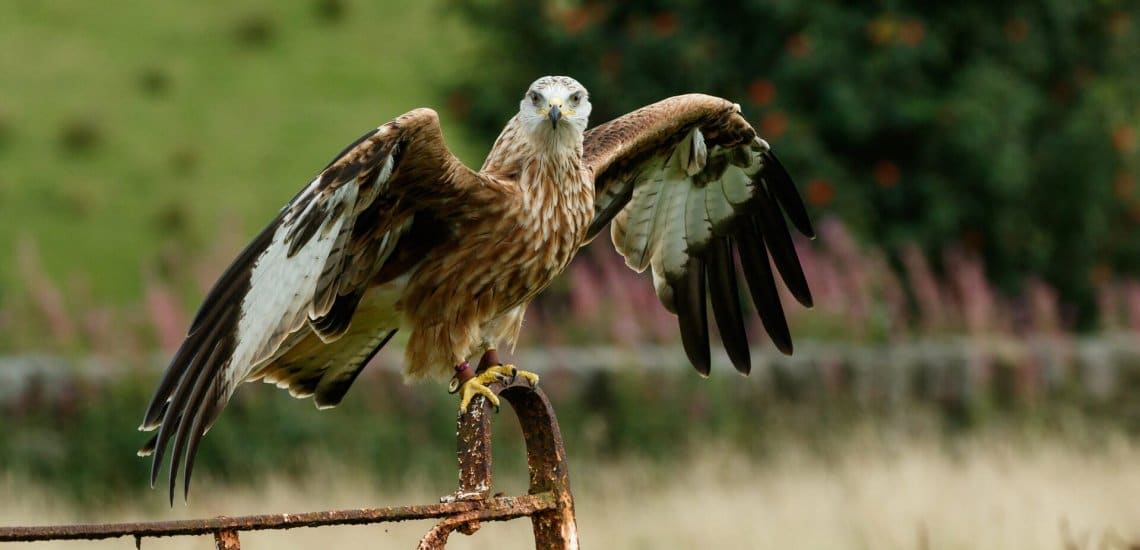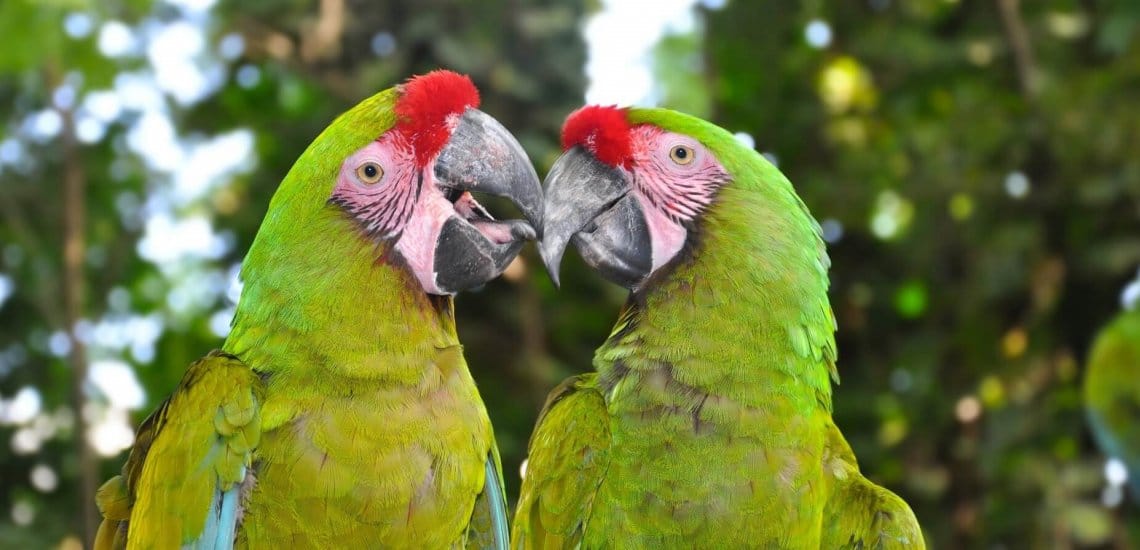Red List 2020: why are iconic African savannah raptors declining?
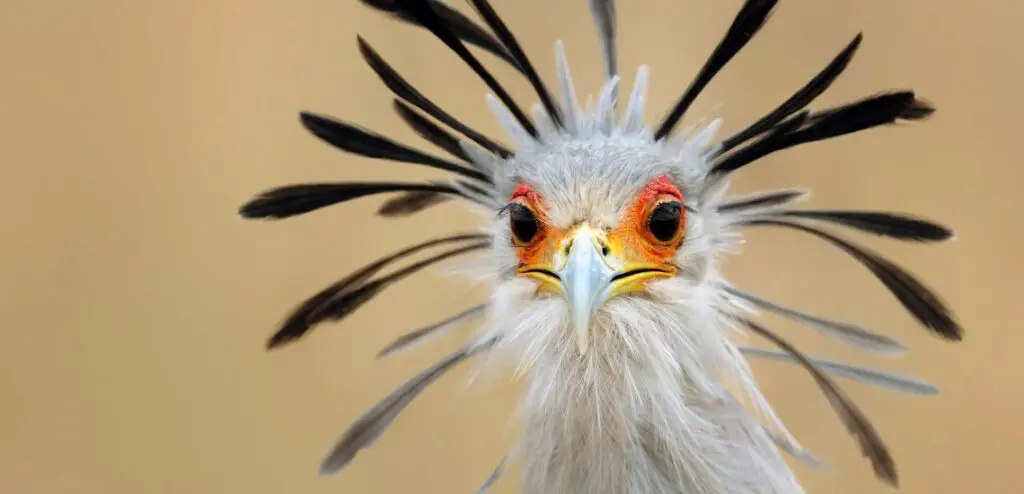
Some wildlife encounters are unforgettable. But this year’s Red List update brings news that three captivating African raptor species are declining alarmingly fast due to multiple threats. Urgent action is needed to ensure these icons of the savannah don’t only exist as memories.
By Shaun Hurrell
A panorama of African sunburnt savannah and far-reaching grassland is a gaze shared through deep time with our human ancestors. Interspersed with rolling ungulate herds and rumbling prides of large predators, the classic vista would not be complete without the heavy thump of elephant footprints on dry dirt, reptilian eyes peering from watering holes, or the rustle of termite legs in the leaf litter. And up in the skies? Soaring birds of prey, of course. However, as reported in the 2020 Red List update, Africa’s raptors are certainly not something to take for granted.
Not only are African vultures extremely threatened with extinction as a result of poisoning and persecution, but related avian icons of the savannah are increasingly imperilled. On 15 December, BirdLife announced that three once-common and wide-ranging African raptors have all been uplisted to Endangered owing to seriously alarming rates of decline – as detected by the monitoring work of BirdLife Partners, other ornithologists and citizen scientists across Africa and analysed by the BirdLife science team for the IUCN Red List of threatened species.
The Secretarybird Sagittarius serpentarius – a striking species famed for its unmistakeable head feathers resembling ‘a secretary with quills tucked behind their ear’ – is one of three species now considered to face a very high risk of extinction, along with Martial Eagle Polemaetus bellicosus and Bateleur Terathopius ecaudatus. Habitat loss and degradation, poisoning, poaching and disturbance are all likely factors in these declines, but more research is needed to identify the root causes and the most efficient way to address them. Action is needed, faster than a Secretarybird stomps its long legs on prey.
Unforgettable
Whether it’s their sheer size, intriguing characteristics or exciting behaviour traits, these birds have always captured people’s imaginations. “Encountering a Secretarybird in the wild can only be described as a captivating experience”, says Dr Melissa Howes-Whitecross, Landscape Conservation Programme Manager, BirdLife South Africa. “For me, it sparked my love of birds, birdwatching and ultimately my conservation career, and I am yet to meet someone lucky enough to see one and not walk away in awe. Watching them stride and strike at dangerous snakes with pin-point accuracy and extreme force will impress even the most hardcore of us. Or if you are able to get up close with these majestic birds, one can only marvel at the intricate beauty of their long eyelashes and crest of feathers that surrounds soul-piercing eyes. Their uplisting should be taken as a serious warning sign that our fragmentation and mismanagement of open grassland and savannah ecosystems is having disastrous effects.”
Dr Kariuki Ndang’ang’a, Head of Conservation for BirdLife Africa, will never forget undertaking bird surveys in Mau Narok in the remote parts of Kenya’s Rift Valley in 2003: “Suddenly a pair of very large raptors emerged from the sky – held together by their talons, swinging each other in loops, and tumbling until they were on the ground. I can still imagine the strong swoosh of air ruffling their feathers as they swung. Each of us in the small team, including local guys who were showing us around, had stopped to look – no need for binoculars because of their size. This is when I came to appreciate how big and powerful the Martial Eagle is. This pair had been playing and enjoying the large expanse of untouched wooded grasslands, but I doubt that these grasslands still stand in the same condition.”
Bateleurs, too, are famed for their behaviour. Meaning ‘tumbler’ in French, their name refers to how the birds rock and tilt their wings from side to side when gliding, as if catching their balance like a street performer. Jonathan Onongo from Nature Uganda (BirdLife Partner) recalls his first encounter in western Uganda: “I remember noticing the unmistakable unique shape of this majestic bird of prey in flight over the grasslands of the Semliki Wildlife Reserve. It saddens me to think that this iconic grassland raptor is now globally Endangered.”
They are just as beautiful up close, says Temidayo Osinubi, Conservation Programmes Coordinator, BirdLife Africa, recollecting a juvenile Bateleur sighting in Kruger National Park: “Without the unique black and red colouration of the adults, I could appreciate just how distinct their wings and body shape is when perched.” But did that juvenile survive long enough to breed? With electrical powerlines increasingly crossing flight paths, tempting carcasses laced with poison, and suitable nesting trees more difficult to find, the modern life of a Bateleur is truly a balancing act – and one not made any easier by their size; species with long gestational periods are often hit hardest.
All three species have a huge range throughout sub-Saharan Africa, yet declines have been so severe (up to 80% overall) in recent decades that ornithologists are struggling to spot them, especially outside protected areas. For example, over three bird generations, Bateleurs are reported to have declined by 99% in Northern Cameroon outside protected areas, and 79% within. Howes-Whitecross has experienced these data in real life: “Having grown up frequently encountering Secretarybirds on the backroads of South Africa, their notable absence from many a modern road trip is devastating but also motivating to sit up and do something to stop their demise.”
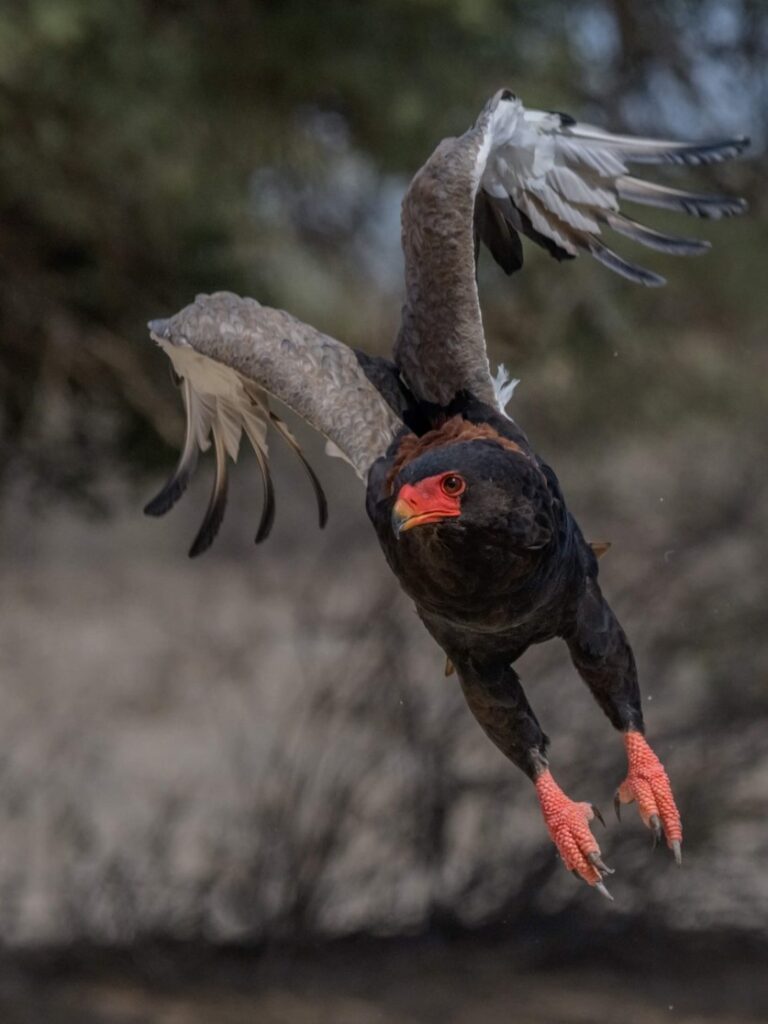
The future of savannah skies
“While any species being listed as threatened is obviously bad news, it doesn’t have to be a tragedy”, says Ian Burfield, Global Science Coordinator (Species), BirdLife International. “For many, the road to recovery begins here, as listing brings visibility to their plight and helps to raise their conservation priority. The issues flagged by the Red List should form the focus of further research and action.”
For the Secretarybird, BirdLife South Africa are one step ahead, with a public campaign in 2019 for the species as ‘Bird of the Year’ (see below), and they are working hard with private landowners to conserve remaining grassland habitats through ‘biodiversity stewardship’, i.e. securing private properties for conservation in addition to the formal protected area network. Secretarybirds are able to coexist with landowners who farm domestic livestock and wild game if landowners manage their land in a way that provides space for biodiversity.
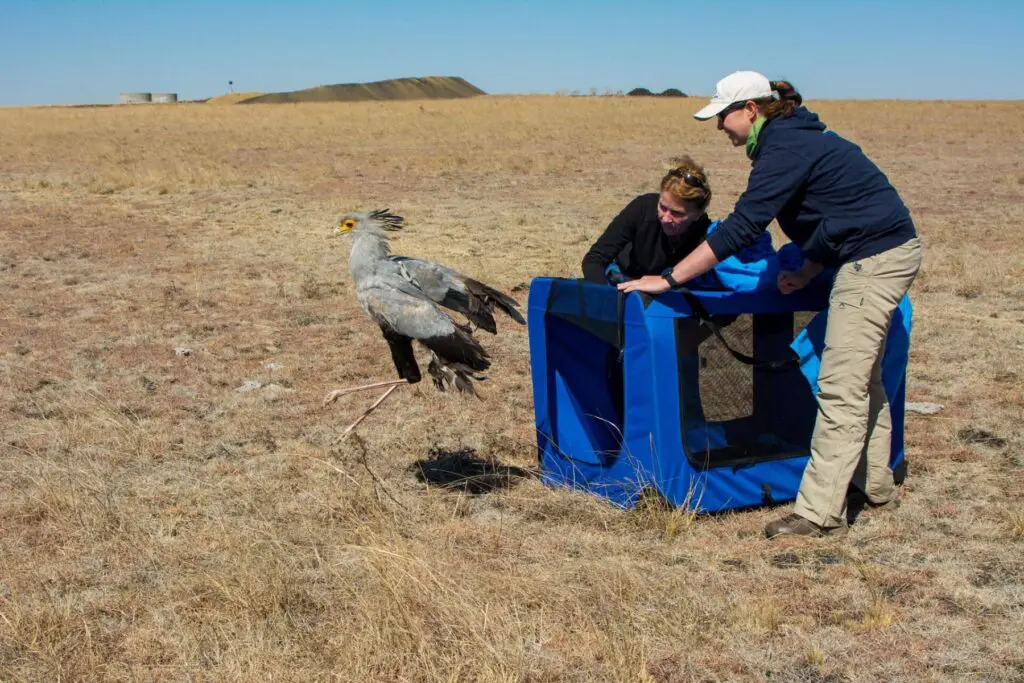
Whilst Protected Areas and Key Biodiversity Areas will be crucial strongholds, we’ll also need to work outside them. This kind of approach is key across Africa, says Ndang’ang’a: “Conservation and policy measures, such as participatory land-use planning, Strategic Environmental Assessments for infrastructure, agriculture, energy and other projects need to be inclusive, especially outside protected areas. This will require the deliberate application of species-based sensitivity tools by developers, and will be key to reversing the plight of raptors in the long term.”
Thinking back to our human ancestors observing African grasslands, it’s land-use that is perhaps the big elephant in the room – or, savannah. “The Secretarybird is a symbol of wide-open horizons, vistas that humans are relentlessly narrowing”, says Howes-Whitecross. “Humans are fragmenting the natural world and this loss in connectivity between natural spaces and between people and the environment is a very concerning trajectory – with the loss of wide-ranging apex predators the symptom.” Let’s not allow those unforgettable encounters with African raptors be some of the last.
Secretarybird: South Africa’s Bird of the Year
BirdLife South Africa nominated the Secretarybird as Bird of the Year in 2019 and ran a successful awareness campaign educating thousands of children and adults about the plight of this species and the conservation measures in place to help them. Free to download educational materials and webinars are available on their website. In the same year, they ran a monitoring challenge using the Birdlasser app and received over 800 sightings of Secretarybirds from across South Africa which will help them to identify areas of remaining strongholds going forward. They are also managing a breeding database and a further six tracking devices have been deployed on Secretarybirds since 2018. All of these data will be pulled into a workshop on Secretarybirds in 2021 which will help set the baseline for a Species Conservation Action Plan to be developed.
